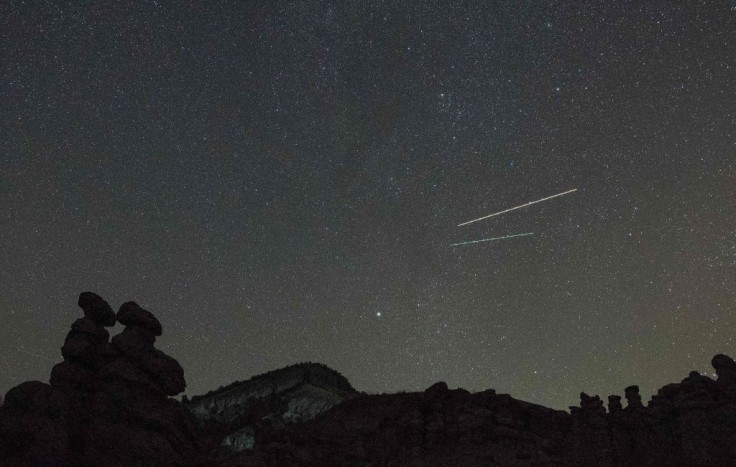
The American Meteor Society released an extraordinary video taken on Friday from a foyer of a home in Rowland Pond, North Carolina. The video appears to have captured a massive fireball meteor falling from the sky.
NASA Meteor Watch reported that numerous meteors that looked like fireballs fell over after 7:40 p.m. EDT on the coast of North Carolina, and constituents from the same region reported at least five more fireballs after the first one.
NASA analysts said that the state was surrounded by meteors that were blazing the skies at 32,000 mph at 48 miles above the ocean in Jacksonville. Meteoroids usually touch the Earth's atmosphere with an estimated 25,000 to 160,000 mph. However, they break slower and smaller as they travel and infiltrate through the atmosphere.
CBSNews reported that it traveled 26 miles through Earth's upper atmosphere, which later broke down to pieces 28 miles above Morehead City. These fireballs are classified as meteors brighter than the planet Venus.
An estimate of 150 people in Virginia, West Virginia, Maryland, South Carolina, and North Carolina has been reported to have witnessed the streaks of fireball and meteors they have sighted in their respective states. Moreover, with more than 80 people reporting it, the latest celestial event that took place in North Carolina had the greatest number of eyewitness accounts.
Read Also : Perseids Meteor Shower 2021: How to Watch Epic Cosmic Event Online Anywhere in the World
What Is a Fireball Meteor?
A luminous meteor is also known as a fireball, normally shining at magnitude -4, which is also the same magnitude planet Venus radiates in the evening sky or in the morning.
In the Earth's atmosphere, an abundance of thousand meteors of fireball magnitude occurs every single day. However, many of these fireballs falling through Earth's atmosphere every day take place in unpopulated regions and in the ocean, while quite a few of them are masked during the daytime. A huge factor of its rarity being caught at night is brought by the comparatively lower number of people out to observe them.
Furthermore, the rarity of these events depends greatly on how bright the celestial bodies are. According to the American Meteor Society, for each consecutively more luminous magnitude class, there are only ⅓ as many fireballs existing, following a radical fall off.
A fireball possessing a magnitude -4 can be sighted once with an estimate of every 20 hours or so. On the other hand, with an estimate of 200 hours spent in meteor observation, one might spot a fireball containing a magnitude -6.
People who have witnessed bright meteors are recommended to report their sighting experience to the AMS. In events where an enormous amount of people reports the same sighting in different trajectories, it is very much possible to recognize the course of the object in question.
The group gathers meteor reports not just in the country but also meteor sightings around the globe in collaboration with other meteor organizations.









